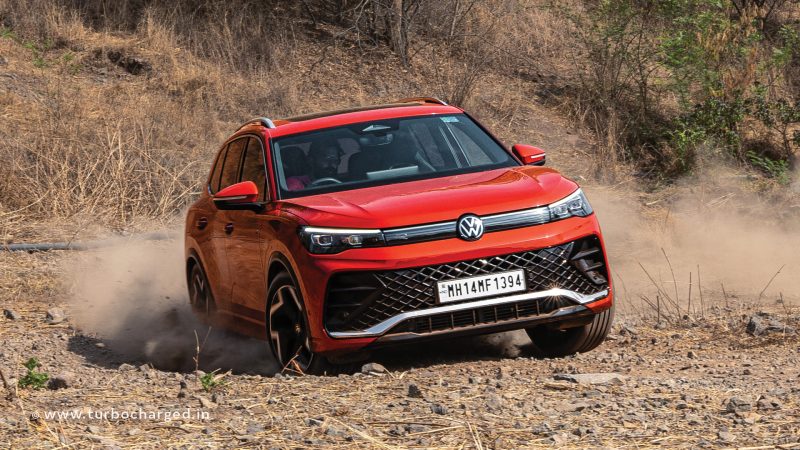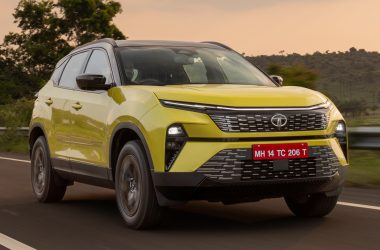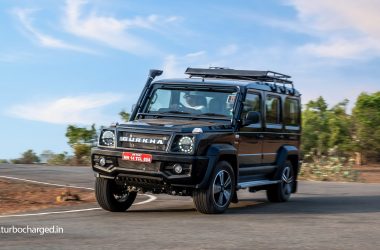Photography: Saidatta Naik, Akshay Jadhav
I have some interesting memories with the Volkswagen Tiguan, having driven it extensively across the country. It’s also an SUV that’s always blended great driving dynamics to excellent comfort, while boasting the solid build quality Volkswagens are known for. Things have changed in a big way for the Tiguan this time though, with Volkswagen bringing in the new generation Tiguan in the sportier, R-Line trim. Interestingly, it comes in via the CBU (Completely Built Unit) route, making it more expensive. It is worth the updates and the higher price tag? I spent a few days with the SUV to find out.
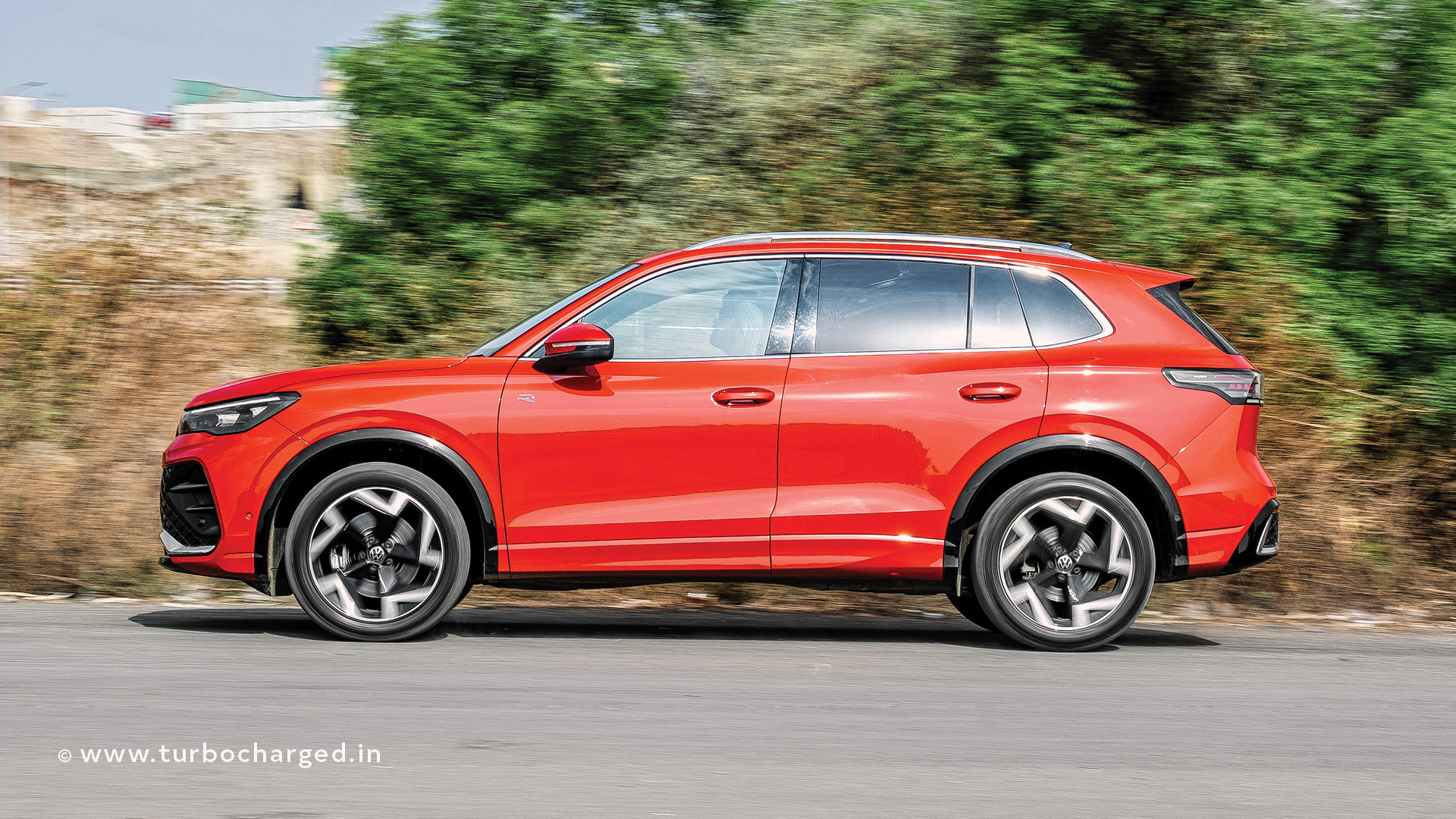
A big change is the new design language. We’ve always known the Tiguan to look boxy, but the Tiguan R-Line feels like a radical departure with its curvier lines, while also being longer and wider. While that makes sense, it is interesting to note that the wheelbase is identical to the previous generation Tiguan, and that this new Tiguan is also shorter in height. The Matrix LED headlamps are more rounded and have a thick slat housing the two-dimensional Volkswagen logo in between, while the DRLs stretch across the width, helping the face look contemporary. The bumper design is aggressive and gets lots of gloss black finishes, along with a wide chrome strip and a faux mesh with large air dams.
The 19-inch wheels look sporty, while the silhouette is very different from the previous generation Tiguan, thanks to the curvy design. There are two sharp creases on the sides, one on the front fender and the other towards the rear, which add character, along with the roof rails. Ground clearance is par for the course at 176mm. The Tiguan R-Line also runs Volkswagen’s IQ LED tail lamps that use a very distinctive design and are connected by an LED strip. Like the front, the rear bumper is finished in gloss black too but also gets some chrome. The overall design is appealing, though the curvier lines have the Tiguan look less hardcore.
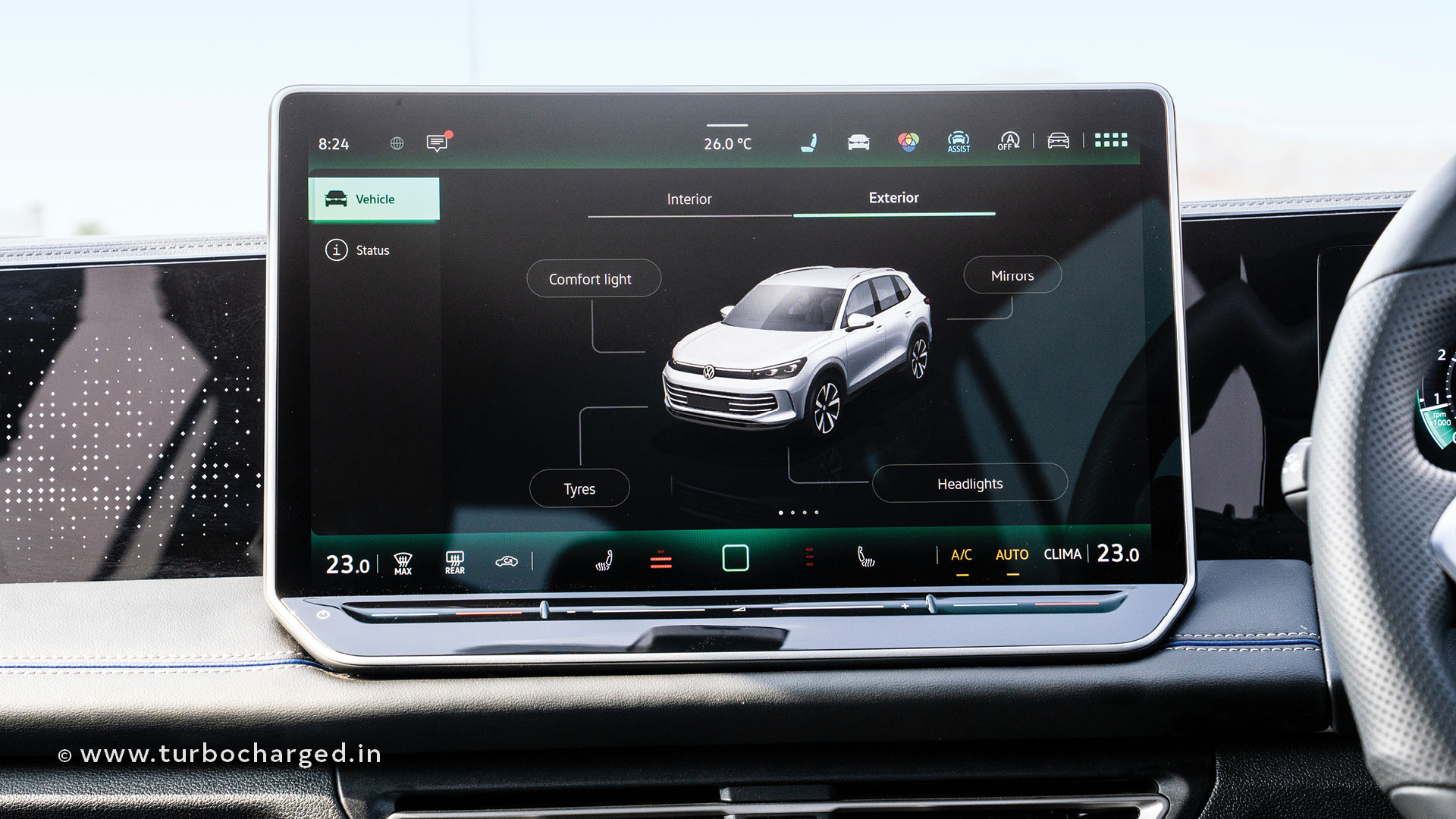
Interiors are radically different and headlining it all is a 15-inch touchscreen – that’s larger than most laptops! The dashboard is more upright and has no physical controls, with everything having been moved to the touchscreen. The only physical controls you get are on the centre console, for the electronic parking brake, engine start-stop and rotor that can toggle between adjusting volume and switching driving modes. The dashboard design is very different from what we see usually, offering a youthful, sporty vibe, especially the left side, which is a near-vertical slab of gloss-black plastic and integrates LEDs for the ambient lighting. The lighting also extends into the door trims and there’s some very interesting patterns and colour combinations to choose from.
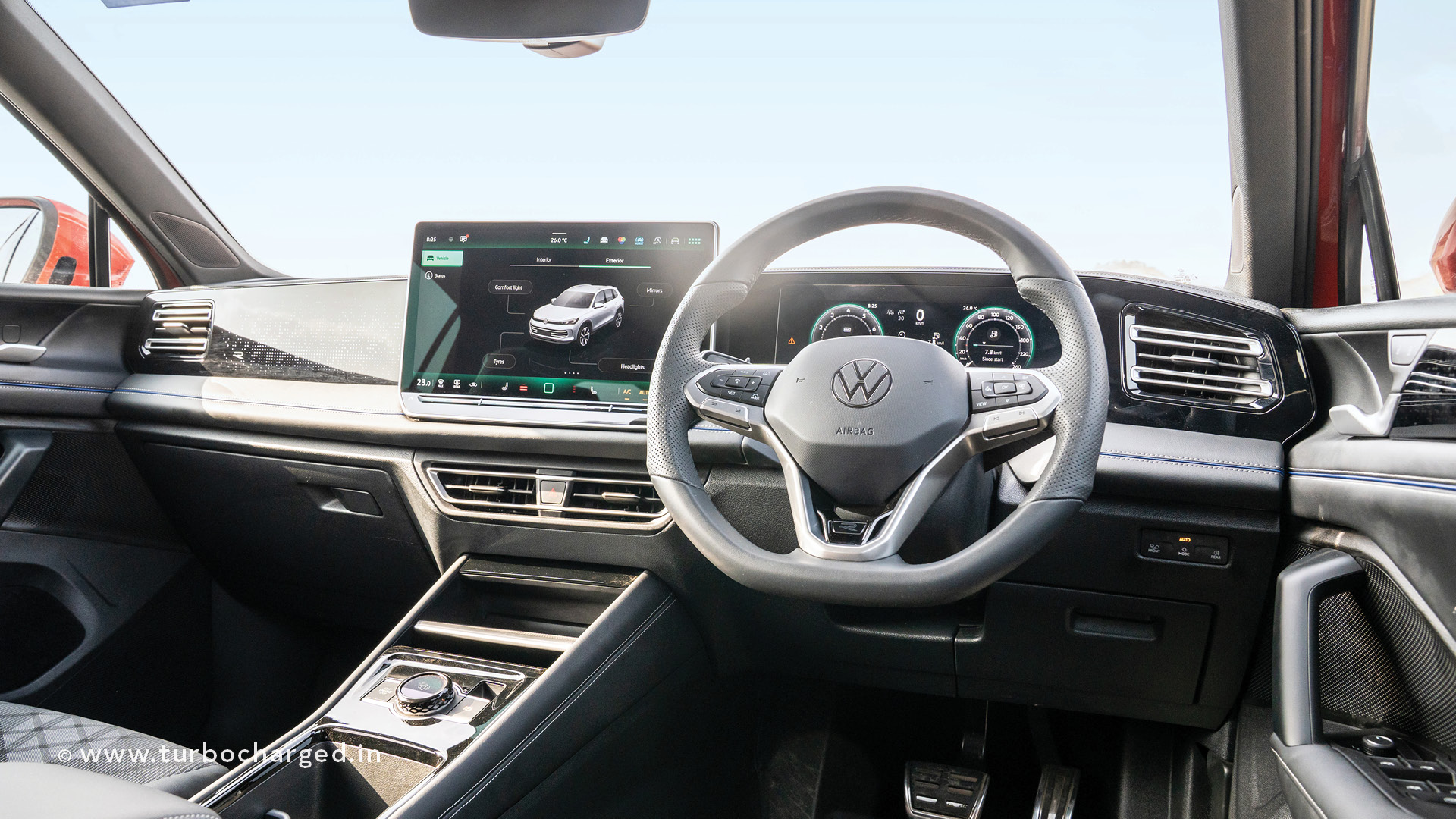
The steering wheel looks identical to the Virtus and Taigun’s but feels more premium and also gets an ‘R’ on its base. The large touchscreen helps in viewing information on the go, or when using navigation. The interface is simple which again helps, and the amount of information you can view on the screen is terrific. I still wish there were physical controls for air-conditioning though, as they’re a touch panel below the touchscreen and confusing to use on the go. Overall quality of plastics is good and the cabin offers the premium vibe you would expect at the price. You also get a panoramic sunroof, that helps in upping the premium quotient. The front seats in the Tiguan R-Line are a highlight too, for multiple reasons.





